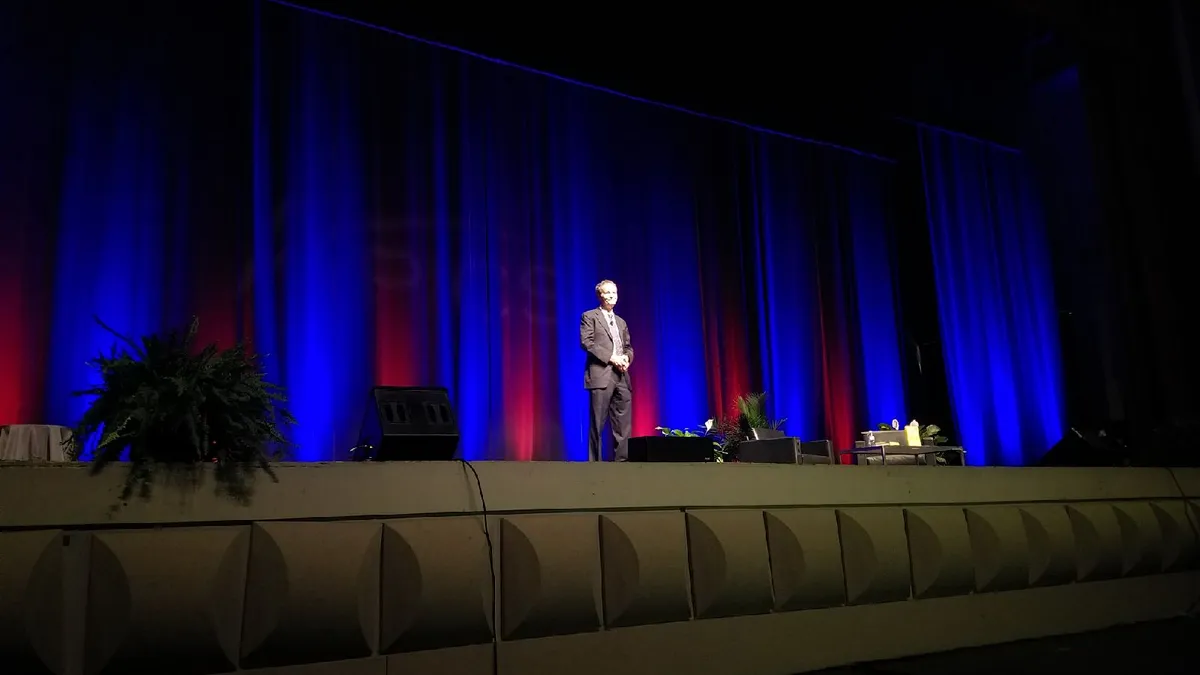Supply chain managers know that better inventory management, better customer service and shorter lead times are often the fruits of a well-run supply chain. But there isn't a lot of talk about how to do that — but the APICS 2017 conference in San Antonio last week highlighted the well-run supply chain specifically.
Supply chains aren’t really just an industry unto themselves; they’re part of an integrated whole. They service a specific function within the whirring machine that is a business. By looking at the supply chain in this holistic way, one can identify departments that overlap and find new ways to help them work better together, all the while while cutting costs and increasing revenue in the long run.
A big theme at APICS involved exhorting supply chain managers to communicate with sales and operations (S&OP) teams and view the two departments collectively — supply chain and S&OP — as a coordinated unit, in order to make supply chains more efficient and intentional.
Don Sheldon, the vice president of education for the APICS Southern Tier, calls S&OP the “headlights” of a business and a synonym for “risk management.” Because S&OP departments are responsible for forecasting bookings and inventory, they need consistent data updates from supply chain managers.
“All of our customers are asking for shorter lead times,” Sheldon told conference attendees.
In order for companies to meet that demand, S&OP and supply chain professionals need to be on the same page about what’s happening with the critical moving parts that include inventory, suppliers and transit times.
One way companies can do this is by using artificially intelligent predictive analytics tools, which thinkSCM partner Patrick Green discussed recently with Supply Chain Dive. These kinds of tools not only provide recommendations to S&OP departments about how to proceed with marketing and new product strategies, but they also give S&OP and supply chain departments an opportunity to collaborate and share data.
“The bigger issue here is having enough data,” Green told Supply Chain Dive. “We’re seeing a big push for a coordinated effort from S&OP and supply chains.”
When discussing how Hostess Brands relaunched itself and built its supply chain from scratch, Director of Supply Chain David Hovey said “S&OP is kind of the mindset. I don’t see why the S&OP shouldn’t be everyone’s favorite department. If we aren’t then we’re doing something wrong.”
For Hovey, S&OP and supply chain cooperation were paramount for Hostess’ success. As a result of the coordinated effort, Hostess slashed lead times and inventory turn while launching successful seasonal series of new cake products (this fall, you can buy a Pumpkin Spice Twinkie).
Part of the process is making sure S&OP and the supply chain pursue the same mission, which, in Hostess’ case, is, “What does the customer want?” Of course, S&OP departments are usually pursuing a mission centered on the customer, but it’s important for supply chains to remember to stay focused on the customer as well.
When S&OP and supply chains are in sync, they can continuously plan, which Hovey said “allows the company to be more responsive to the market.” That helps companies stay on top of trends and gives them a chance to jump ahead in the curve of innovation — and that can pay off big time.
“We’ve been able to invest in better, high-speed lines with this new company,” Hovey said.
The takeaway here is that supply chains shouldn't strategize on their own — they need to understand how they fit with other departments, and find ways to pursue the company’s goals as a team. As presenters at APICS revealed, it’s a growing trend as quick turnaround, impeccable customer service and sleek logistics become top priorities.













